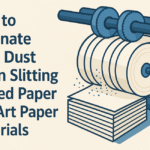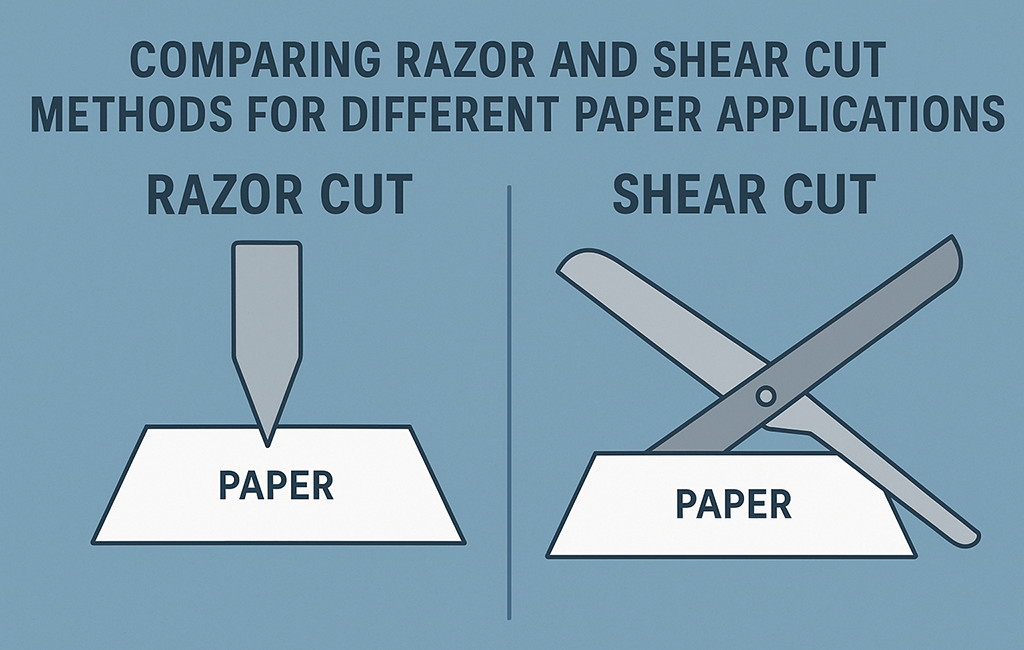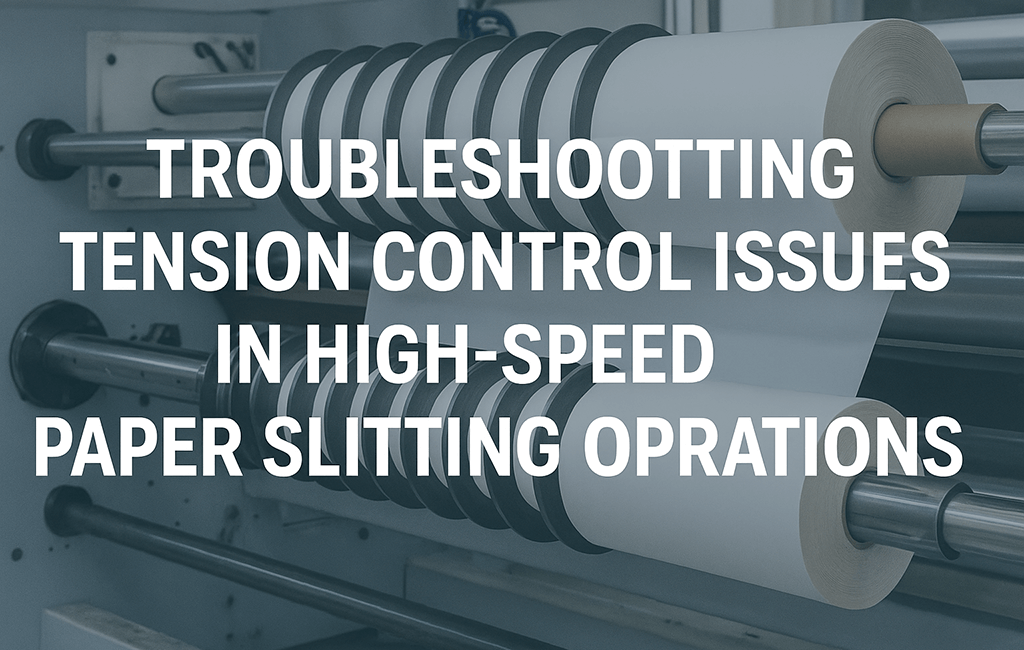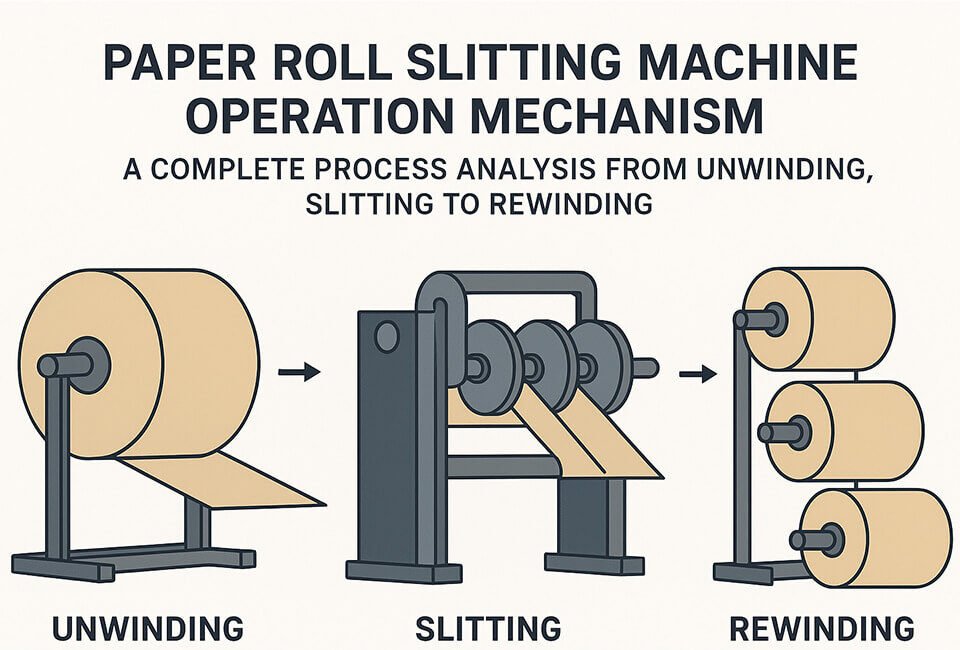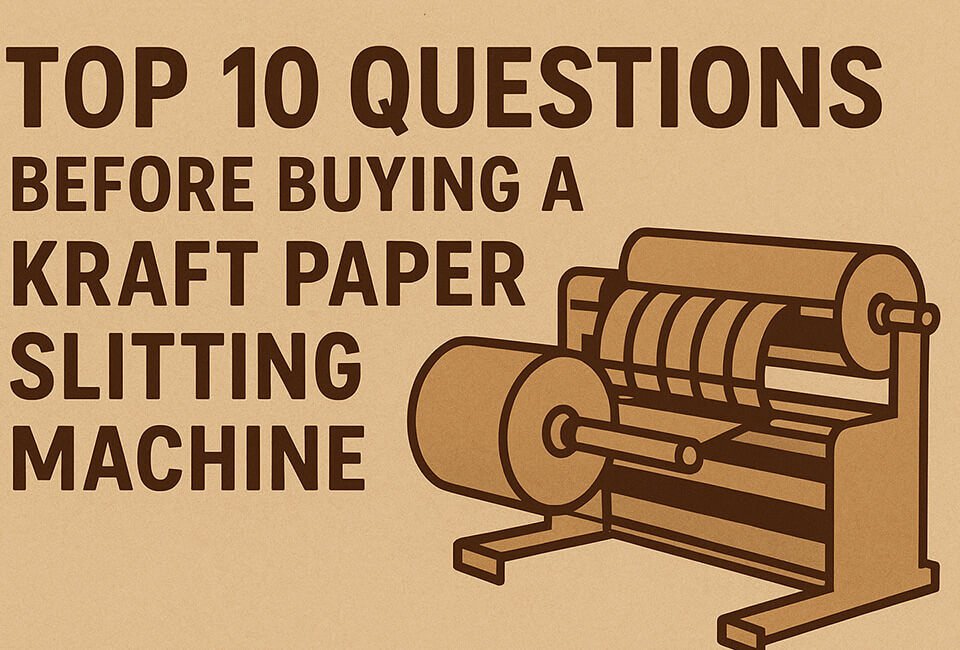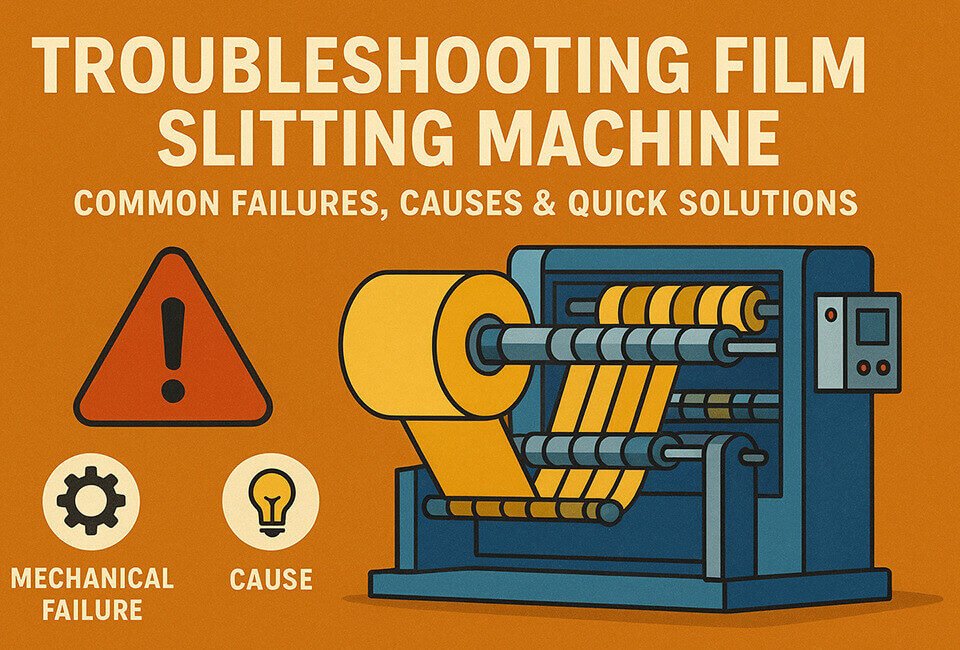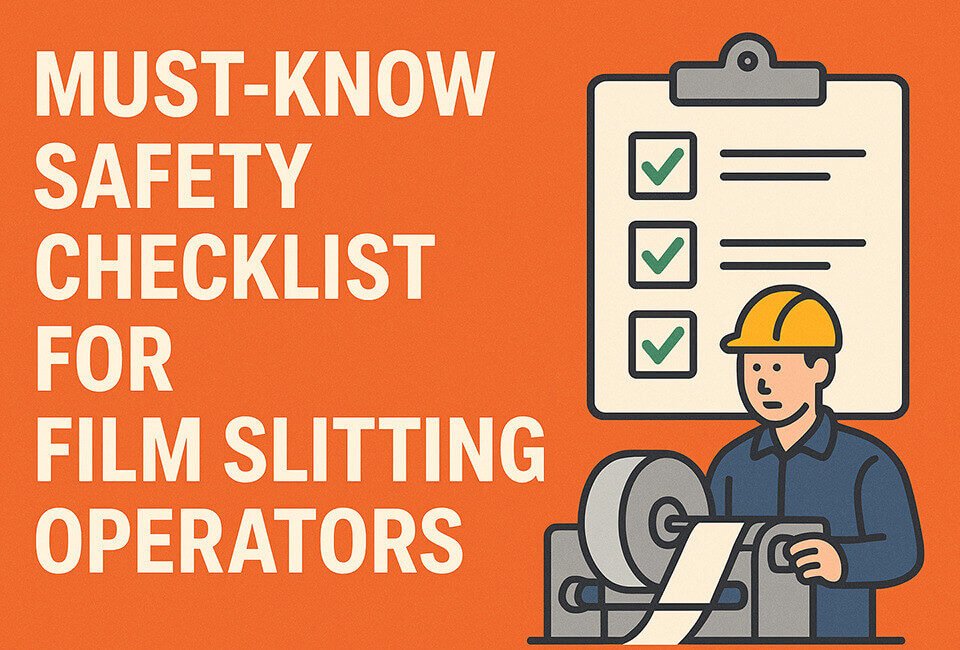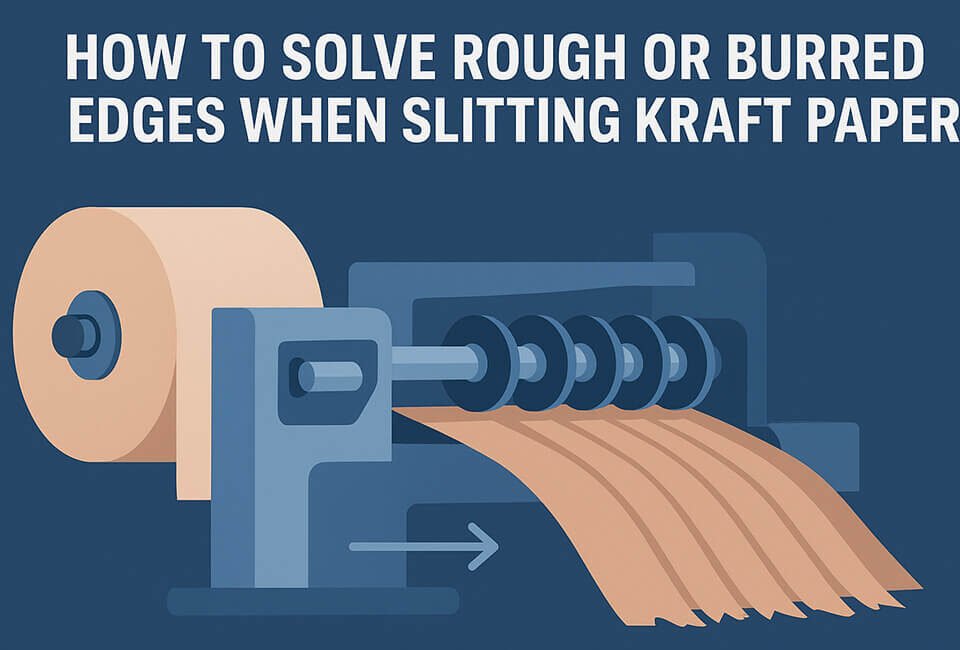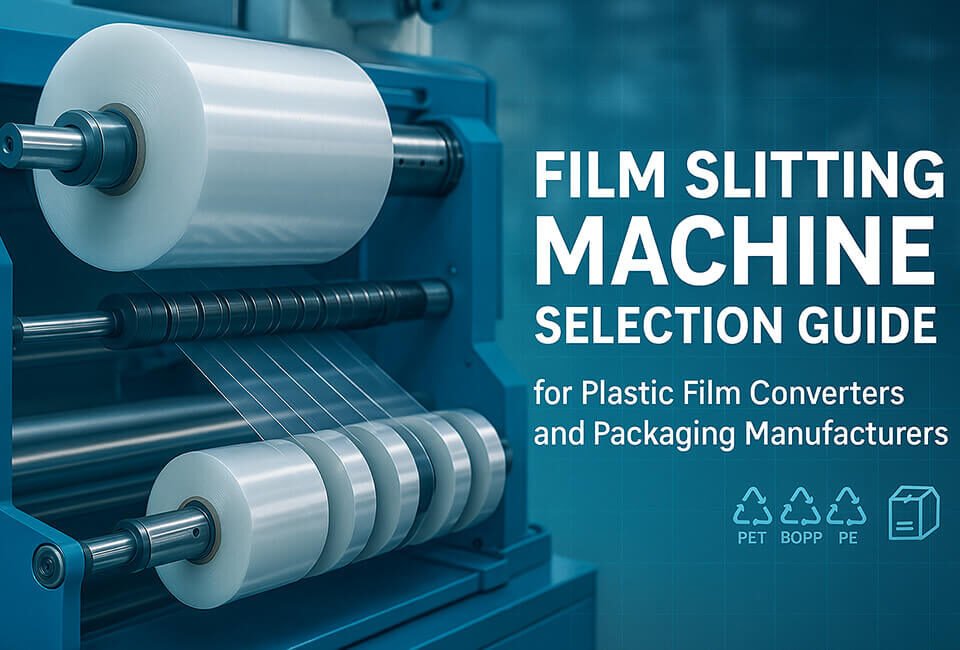When operating a slitting machine for paper at high speeds, tension control becomes critical. It determines both product quality and operational efficiency. Even minor tension variations can cascade into major production issues—from web breaks that halt your line to quality defects that render entire rolls unsaleable.
This comprehensive troubleshooting guide addresses the most challenging tension control problems. Converting professionals face these issues daily when running high-speed paper slitting operations. Whether you’re dealing with lightweight newsprint at 1,500 ft/min or heavyweight coated stock at 800 ft/min, proper tension management is essential for maintaining tight slit width tolerances and preventing costly downtime.
What Causes Tension Control Problems in Paper Slitting Machines?
Understanding root causes helps you troubleshoot effectively. In high-speed paper slitting operations, tension problems typically stem from four primary sources:
1. Mechanical Component Wear
Load cells drift over time, showing accuracy degradation of 0.5-1% annually. Worn brake pads create inconsistent drag forces. Meanwhile, deteriorating roller surfaces develop irregular friction patterns that disrupt web tension uniformity.
2. Control System Calibration Issues
PID controllers require periodic tuning as machine components age. Industry standards recommend quarterly calibration checks. However, many operations extend this to annual intervals, allowing control loops to drift significantly from optimal settings.
3. Material Property Variations
Paper moisture content fluctuations of just 1-2% can alter web tensile strength by 15-20%. These changes combine with basis weight variations within a single parent roll. The result creates dynamic tension requirements that static control settings cannot accommodate.
4. Environmental Factors
Temperature swings affect both paper properties and equipment performance. A 10°F increase can reduce paper stiffness by 5-8%. It simultaneously alters brake pad friction coefficients and load cell readings.
How to Diagnose Tension Control Issues in Your Slitting Machine for Paper?
Systematic diagnosis prevents wasted time chasing symptoms. Instead, you’ll address root causes directly. Follow this structured approach to identify tension control problems efficiently:
Step 1: Analyze Defect Patterns
Web breaks at startup indicate excessive initial tension spikes. Check acceleration ramp rates and pre-tension settings. Target initial tension should be 15-20% below running tension for most grades.
Edge waviness or baggy lanes point to cross-web tension variations. Verify spreader roll alignment using a precision straight edge. Deviation should not exceed 0.002″ per foot of face length.
Telescoping in finished rolls suggests tension taper issues. Measure unwinding and rewinding tensions at 25%, 50%, 75%, and 90% of roll diameter. This identifies where taper programming fails.
Step 2: Perform Load Cell Verification
Install calibrated test weights directly on load cells. Use weights ranging from 50-200 lbs. Reading accuracy should remain within ±0.5% of applied load. Document readings at multiple load points to verify linearity across the operating range.
Step 3: Check Dancer System Response
Dancer-controlled systems require specific response testing. Measure response time to step changes in web speed. Properly tuned dancers stabilize within 2-3 seconds for speed changes up to 20%. Excessive oscillation indicates improper damping or inertia mismatch.
Step 4: Validate Brake System Performance
Use a torque meter to verify brake consistency. Torque should remain stable across the full speed range. Variations exceeding ±5% indicate worn components or contaminated friction surfaces requiring immediate attention.
[IMAGE: Technician performing load cell calibration on paper slitting machine]
What Are the Most Common High-Speed Tension Control Problems?
Problem 1: Tension Hunting During Acceleration
Symptoms: Web tension oscillates ±10-15% during speed ramps. It only stabilizes at constant speed.
Root Cause: Mismatched control loop gains create competing responses. This happens between speed and tension controllers during transient conditions.
Solution: Implement cascade control architecture. Set speed loop as primary and tension as secondary. Configure tension controller response 3-5 times slower than speed controller to prevent interaction. For Kampf or Atlas slitting systems, typical tension loop time constants range from 0.5-1.2 seconds.
Problem 2: Web Wander at Speeds Above 1,000 ft/min
Symptoms: Slit edges drift laterally. This creates width variations exceeding ±0.5mm specification limits.
Root Cause: Aerodynamic effects at high speeds create air entrainment. The air cushion between web and rollers reduces guiding forces.
Solution: Install vacuum-assisted web stabilization at critical spans. Target vacuum levels of 2-4 inches water column for lightweight grades (≤40 lb basis weight). Use 4-8 inches for heavier stocks. Position vacuum boxes 6-12 inches before slitting point for maximum effectiveness.
Problem 3: Differential Tension Across Web Width
Symptoms: Center slits run tight while edge slits show slack. Sometimes the reverse pattern occurs.
Root Cause: Parent roll diameter variations create uneven unwinding geometry. Spreader roll limitations compound this effect.
Solution: Implement segmented tension control using individually controlled rewinding stations. For operations lacking this capability, install bowed rolls with 0.125-0.250″ crown. This redistributes cross-web tensions effectively. Adjust crown based on web width—use 0.002″ crown per inch of web width as starting point.
How to Optimize Tension Settings for Different Paper Grades?
Each paper grade requires specific tension parameters. These settings depend on material properties. Use these guidelines as starting points for optimization:
Lightweight Grades (20-40 lb basis weight)
- Newsprint: 0.3-0.5 PLI (pounds per linear inch)
- Directory: 0.4-0.6 PLI
- Tension taper: Linear reduction to 70% at core
- Maximum speed: 1,500-2,000 ft/min
Medium Weight Grades (40-80 lb basis weight)
- Offset printing: 0.6-1.0 PLI
- Coated freesheet: 0.8-1.2 PLI
- Tension taper: Hyperbolic profile to 80% at core
- Maximum speed: 1,000-1,500 ft/min
Heavyweight Grades (80+ lb basis weight)
- Cover stock: 1.2-1.8 PLI
- Paperboard: 1.5-2.5 PLI
- Tension taper: Minimal reduction, 90-95% at core
- Maximum speed: 600-1,000 ft/min
What Preventive Maintenance Prevents Tension Control Issues?
Proactive maintenance reduces tension-related problems significantly. Your slitting machine for paper requires scheduled procedures. Implement these maintenance tasks consistently:
Daily Checks
- Verify load cell zero points before first run
- Inspect web path for debris accumulation
- Check brake pad thickness using go/no-go gauges
- Monitor dancer arm movement for smooth operation
Weekly Procedures
- Calibrate tension displays against certified test weights
- Clean photoelectric sensors and encoder wheels
- Lubricate dancer pivot points with specified grease
- Verify spreader roll bow adjustment mechanisms
Monthly Tasks
- Perform full PID loop tuning optimization
- Replace worn brake pads when below 3mm thickness
- Check roller runout using dial indicators (≤0.001″ TIR)
- Validate emergency stop tension release functions
Quarterly Maintenance
- Replace load cell cables showing any damage
- Perform complete control system backup
- Verify ground connections measure ≤5 ohms
- Update tension control software to latest versions
How Do Environmental Conditions Affect Paper Slitting Tension Control?
Environmental stability directly impacts tension control reliability. Understanding these relationships enables proactive adjustments. Monitor and control your production environment carefully.
Temperature Effects
Temperature changes affect multiple system components. For every 10°F temperature increase:
- Paper tensile strength decreases 3-5%
- Required web tension reduces proportionally
- Brake friction coefficients change ±8-12%
- Load cell readings drift 0.02-0.03% per °F
Compensation Strategy: Implement temperature-based tension scaling in control algorithms. Program 0.5% tension reduction per 10°F above 70°F baseline.
Humidity Impacts
Relative humidity variations affect paper more dramatically than temperature. These effects compound quickly:
- 10% RH increase adds 1-2% moisture to paper
- Dimensional stability degrades above 50% RH
- Static electricity issues emerge below 35% RH
- Web tracking becomes erratic at extremes
Control Requirements: Maintain production areas at 45-55% RH and 68-72°F. This range provides optimal tension stability.
What Advanced Techniques Improve High-Speed Tension Control?
Modern slitting operations employ sophisticated strategies. These go beyond basic PID control:
Predictive Tension Control
Machine learning algorithms analyze historical tension data. They predict optimal settings for upcoming jobs. Systems from manufacturers like MAGPOWR and Montalvo demonstrate impressive results. Users report 15-20% reduction in setup time and 25% fewer web breaks.
Multi-Zone Tension Architecture
Dividing the web path into zones isolates disturbances. Each zone operates independently:
- Zone 1: Unwind to first idler (0.3-0.5 PLI)
- Zone 2: Pre-slit span (0.8-1.0 PLI)
- Zone 3: Post-slit to rewind (0.6-0.8 PLI)
Active Vibration Dampening
High-frequency tension oscillations require active suppression. These oscillations typically exceed 10 Hz. Piezoelectric actuators on dancer arms counteract vibrations in real-time. They maintain tension stability within ±2% at speeds exceeding 2,000 ft/min.
Conclusion: Mastering Tension Control in Your Slitting Machine for Paper
Successful high-speed paper slitting depends on precise tension control. Understanding complex interactions is crucial. These include mechanical systems, material properties, and environmental conditions. This knowledge helps operators prevent most tension-related issues before they impact production.
Remember that each slitting machine for paper has unique characteristics. These require customized solutions. Start with the guidelines provided here, but always validate through systematic testing and measurement. Document successful settings for different grades and conditions to build your operation’s knowledge base.
Proper web tension remains the cornerstone of efficient paper converting. Whether troubleshooting existing problems or optimizing for new materials, focus on the fundamentals. Regular maintenance, systematic diagnosis procedures, and openness to emerging technologies will keep your slitting operations competitive in an increasingly demanding market.

